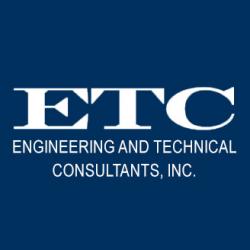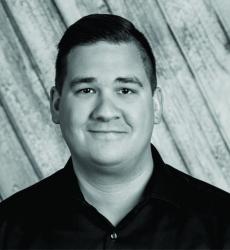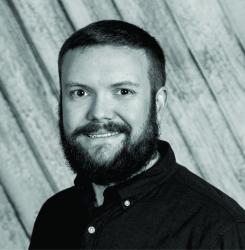Birds Of A Feather

 Alfred Hitchcock had bird issues (especially seagulls), but in the Baltimore-Washington area, the most common pest birds are pigeons, house sparrows, and starlings. These birds are undesirable if they land, roost, and nest on or in our buildings because they bring unwanted noise, odor, and often disease. Plus, no one likes their deck, patio, lawn furniture, or other belongings adorned with bird droppings.
Alfred Hitchcock had bird issues (especially seagulls), but in the Baltimore-Washington area, the most common pest birds are pigeons, house sparrows, and starlings. These birds are undesirable if they land, roost, and nest on or in our buildings because they bring unwanted noise, odor, and often disease. Plus, no one likes their deck, patio, lawn furniture, or other belongings adorned with bird droppings.
If you’ve ever tried getting rid of pest birds, you probably know that they annoyingly adapt to many control methods and won’t go away without a fight. After all, they’re called “pests” for a reason. So how do you win this battle and get them to leave for good? You have to think like the bird. Birds seek flat, unobstructed roosting surfaces and they are looking for food. If you take these two things away, they’ll find somewhere else to go.
To reduce or eliminate surfaces on which pest birds roost (i.e. ledges, railings, parapets, awnings, etc.) you should consider installing one or more physical barriers, which typically include spikes (plastic or metal), netting, and electric barriers. Physical barriers are humane, eco-friendly and cost-effective solutions that have high success rates. Spikes and netting are inexpensive and easy to install, but are best suited for hidden areas or where building aesthetics is not a priority. Wires and electric barriers (low-voltage, non-lethal) are less obtrusive and often virtually invisible.
Another great way to make flat roosting surfaces unavailable is to cover them with wood or metal sheathing at a 45° or steeper slope. If you are considering a roof or façade repair/replacement project, this would be the perfect time to implement these methods.
Other bird control systems like sound, traps, aversion chemicals and killing are inhumane, expensive, temporary, and/or ineffective options. We and the Humane Society do not recommend them. As for plastic owls and hawks, they only work on the stupid birds. Savvy city birds aren’t fooled.
The last thing to do to keep birds away is limit availability to food. Implementing better trash management and asking residents to not feed them are two ways to encourage birds to inhabit other areas.
Since every building has its own unique roosting sites and bird access, there is no “one size fits all” bird control option. Be sure to have a qualified professional discuss with you which options are the most appropriate for your building and goals


 Have you ever seen that yellow sign before driving over a bridge that says, “
Have you ever seen that yellow sign before driving over a bridge that says, “




 Landscape Infiltration devices have become a favored method of controlling and filtering sediment and pollution carried by rainwater runoff, replacing large sediment ponds previously used. Landscape infiltration devices utilize beds of sand, gravel and mulch, along with native plantings to filter the runoff before the water enters the stormwater system. When completed, the area appears to be a nicely landscaped section of the property.
Landscape Infiltration devices have become a favored method of controlling and filtering sediment and pollution carried by rainwater runoff, replacing large sediment ponds previously used. Landscape infiltration devices utilize beds of sand, gravel and mulch, along with native plantings to filter the runoff before the water enters the stormwater system. When completed, the area appears to be a nicely landscaped section of the property. Commenting on the transfer of ownership, Mr. Shuffleton states “As I prepare to step away, simply to enjoy the next juncture in life, I am fortunate to turn to my key employees who have played a pivotal role in the growth of ETC. It is these employees who will take over where I leave off; growing the company on the same guiding principles and business ethics upon which ETC was founded. I am proud of all that we have accomplished, and equally proud in the legacy and exciting opportunity I pass on to them and the entire ETC team”.
Commenting on the transfer of ownership, Mr. Shuffleton states “As I prepare to step away, simply to enjoy the next juncture in life, I am fortunate to turn to my key employees who have played a pivotal role in the growth of ETC. It is these employees who will take over where I leave off; growing the company on the same guiding principles and business ethics upon which ETC was founded. I am proud of all that we have accomplished, and equally proud in the legacy and exciting opportunity I pass on to them and the entire ETC team”. Since 2015, ETC and its employees have teamed up to support those with disabilities through canine assistance. With planning and participation from our dedicated staff, we have been able to raise thousands of dollars for non-profit working dog organizations, such as Canine Companions for Independence.
Since 2015, ETC and its employees have teamed up to support those with disabilities through canine assistance. With planning and participation from our dedicated staff, we have been able to raise thousands of dollars for non-profit working dog organizations, such as Canine Companions for Independence. The ETC team will be attending the Washington Metro Chapter of CAI Conference & Expo on Saturday March 10th. We would be so pleased if you stopped by to say hello.
The ETC team will be attending the Washington Metro Chapter of CAI Conference & Expo on Saturday March 10th. We would be so pleased if you stopped by to say hello. Imagine a winter without the need for ice melt. Researchers at Drexel, Purdue and Oregon State University are working with concrete admixtures to hopefully make this a reality. Their research includes the addition of phase changing materials such as paraffin, coconut, or palm oils into the concrete mix and has proven to melt snow in certain conditions. The phase change materials release thermal energy as they solidify, meaning as the temperature drops, they release heat, which melts the snow. The inclusion of the phase changing materials in the concrete mix result in a one-time cost at construction rather than reoccurring costs, such as electricity, in cases where heating elements are embedded in concrete for snow melting. More information on the research can be found at the following link: http://drexel.edu/now/archive/2017/September/self-melting-concrete-roads/.
Imagine a winter without the need for ice melt. Researchers at Drexel, Purdue and Oregon State University are working with concrete admixtures to hopefully make this a reality. Their research includes the addition of phase changing materials such as paraffin, coconut, or palm oils into the concrete mix and has proven to melt snow in certain conditions. The phase change materials release thermal energy as they solidify, meaning as the temperature drops, they release heat, which melts the snow. The inclusion of the phase changing materials in the concrete mix result in a one-time cost at construction rather than reoccurring costs, such as electricity, in cases where heating elements are embedded in concrete for snow melting. More information on the research can be found at the following link: http://drexel.edu/now/archive/2017/September/self-melting-concrete-roads/. Incomplete combustion of wood in fireplaces creates a buildup of flammable oils (creosote) in chimney flues, which can contribute to chimney or building fires. Only dry, seasoned wood (preferably hardwood) should be burned in fireplaces. Green and/or water saturated wood burns at a lower temperature and less completely than dry, seasoned wood and poses a greater potential for creosote deposition. Coniferous woods (pine, fir, spruce, etc.) should not be used. They tend to be highly resinous and will deposit more material than hardwoods. Household trash or other items should never be burned in fireplaces.
Incomplete combustion of wood in fireplaces creates a buildup of flammable oils (creosote) in chimney flues, which can contribute to chimney or building fires. Only dry, seasoned wood (preferably hardwood) should be burned in fireplaces. Green and/or water saturated wood burns at a lower temperature and less completely than dry, seasoned wood and poses a greater potential for creosote deposition. Coniferous woods (pine, fir, spruce, etc.) should not be used. They tend to be highly resinous and will deposit more material than hardwoods. Household trash or other items should never be burned in fireplaces.